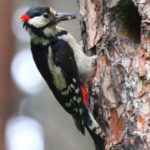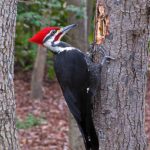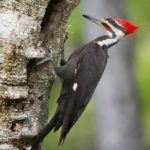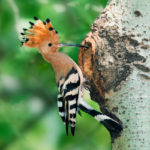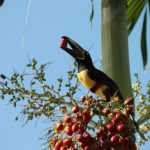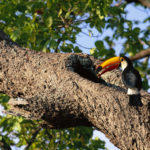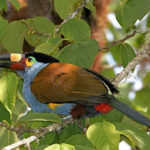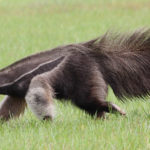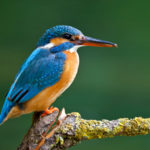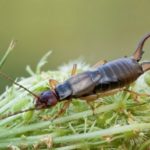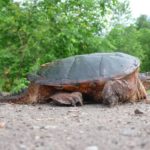Woodpeckers – information
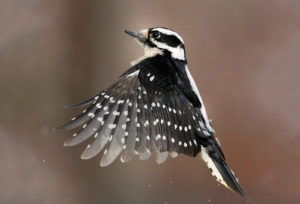 There are more than 220 different kinds of woodpeckers, and all of them (well, or almost all) get their food by making holes in the bark of trees with the help of their sharp beak, and then pushes their long tongue into the hole, To get insects from under the bark. The language of woodpeckers is very well adapted to catching insects. It is so long that the woodpecker can pull it beyond the tip of the beak, and the sticky covering of the tongue easily absorbs the prey.
There are more than 220 different kinds of woodpeckers, and all of them (well, or almost all) get their food by making holes in the bark of trees with the help of their sharp beak, and then pushes their long tongue into the hole, To get insects from under the bark. The language of woodpeckers is very well adapted to catching insects. It is so long that the woodpecker can pull it beyond the tip of the beak, and the sticky covering of the tongue easily absorbs the prey.
Woodpeckers are beaking on tree trunks to claim their right to this territory and declare their readiness to create a pair. A large motley woodpecker is able to knock at a speed of 20 beats per second. During dabbling, the force of impact exceeds the force of the earth’s gravity by a factor of a thousand. The head does not break, because the woodpecker has a porous cartilaginous gasket – it takes on most of the recoil. In addition, with each stroke, the special muscle moves the cranium as far from the beak as possible.
By the way, one of the 2006 Shnobelev Prizes for Ornithology was awarded to a researcher from California for his work “Why does the woodpecker not have a headache?” The woodpeckers move from below upwards, clinging to the bark with sharp claws and actively helping their tail. The tail performs such an important role and carries such a heavy load that for a year is erased by one-tenth. The American royal woodpecker is the largest in this family of birds, its length is 55 cm.
A dwarf woodpecker on the contrary is the smallest – it is only 8 cm in length. Woodpeckers nest in hollows in trees. They can use the hollow of the previous year or knock out a new one on the “family” of 2-12 eggs 🙂 A sucking woodpecker eats sweet, sugar nectar. He makes a hole in the tree and consumes the oozing juice. In addition to insects, a large spotted woodpecker feeds on eggs and chicks of other birds. A woodpecker can eat up to 1000 ants at one meal.
Throughout the autumn, the acorn woodpecker from North America makes up to 400 holes in the trunks of trees and puts them in each on the acorn to save for the winter. In 1995, a pair of golden shilok woodpeckers (Colaptes auratus) punched 200 holes in the polysterene thermal insulation coating of the outer fuel tank of the space shuttle Discovery, which caused the launch date to be postponed.
